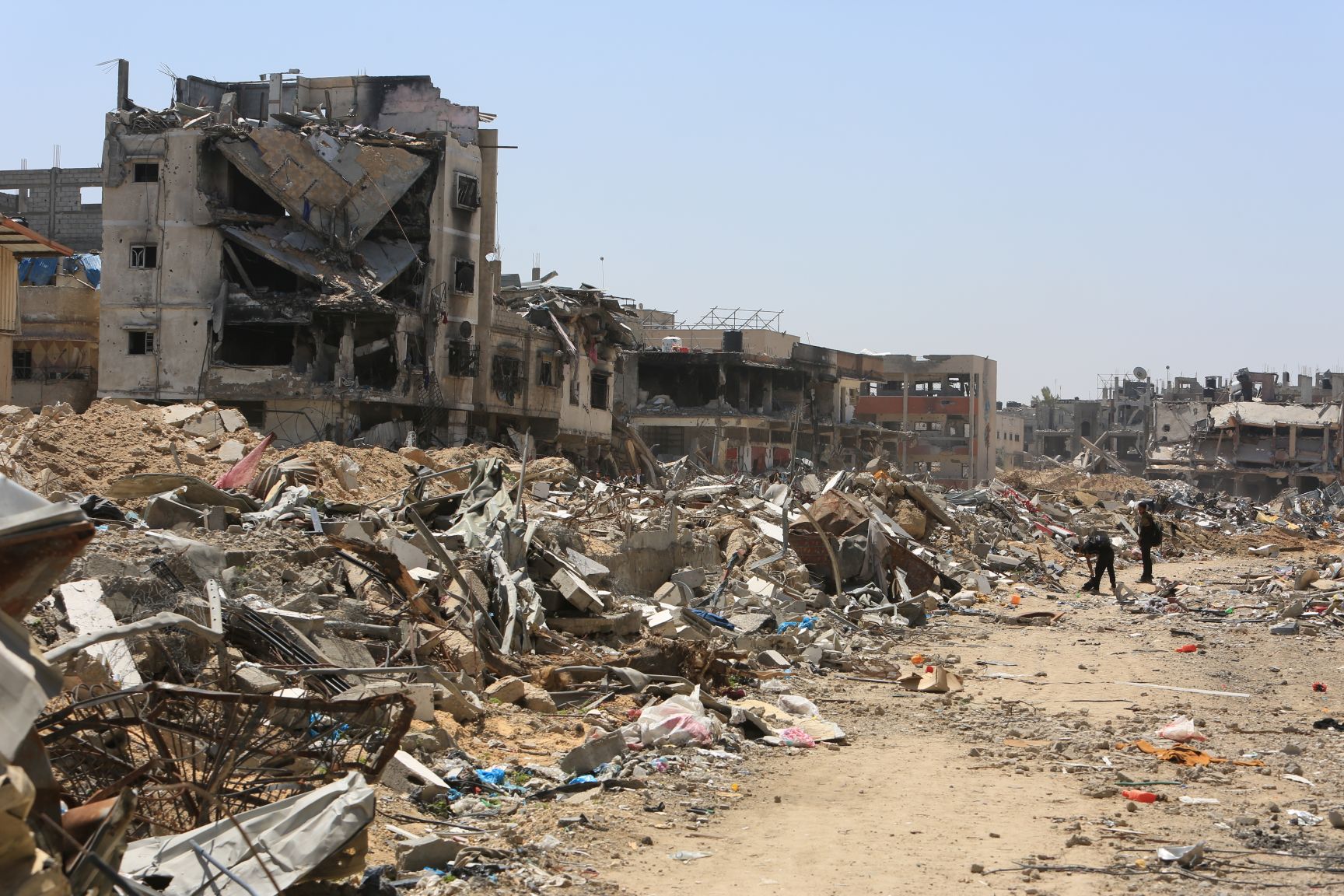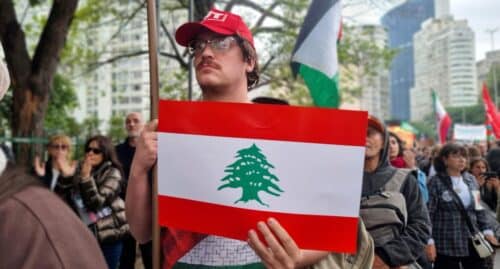
The campaign for the eradication of the murderous Hamas regime in the Gaza Strip had placed the IDF in a humanitarian conundrum: on one hand, there are over a million displaced who are in need of aid and housing. On the other hand, Hamas pillaged the humanitarian aid and is fortifying itself in areas of dense population.
At present, Israel is facing a triple challenge: it is demanded to provide the population with humanitarian aid, but must do so without the unintended consequence of boosting Hamas in the Strip. Is there a way to ensure the population has a roof over its head without having to rehabilitate the stronghold of terror in the Strip? How can Israel install the future civil leadership that would replace Hamas and the Palestinian Authority?
The Humanitarian Islands Plan, authored by the IDSF HaBithonistim movement research department, led by researchers Adv. Yifa Segal, Lt. Col. (res.) Baruch Yadid, and contributing researcher Mrs. Jennifer Thiel, provides an answer to all these questions, which could change the face of Gaza.

A dangerous problem – Hamas takes advantage of humanitarian aid
The humanitarian aid predicament is a direct result of the October 7 massacre, that had brought Israel to launch the war in the Gaza Strip. The IDF has instructed the civilian population to evacuate the areas of fighting to eliminate the risk of hurting innocents, and allow the army to conduct operational activities against terror infrastructures that Hamas operated from within these areas. As a result of this activity, large areas were left either razed to the ground or unfit for habitation. To date, there are over one million Gazans that are considered displaced after having evacuated the battle areas.

Naturally, these displace are in need of humanitarian aid. And indeed, since the outbreak of the war, large-scale aid has been continuously shipped into the Gaza Strip, totaling as of now some one million tons. However, the displaced also need proper housing as well.
With that said, there are two prominent obstacles for the supply of this aid and housing. The first is that Hamas pillages huge amounts of food and equipment that arrive into the Strip for its own survival, on the expense of the lives of its own people. The other challenge is that the people cannot return to their homes and rehabilitate the pre-war centers of population because here too, Hamas – concerned solely with its own preservation at whatever cost – had established its terror network above and underground in these areas.
The question is: how may Israel help the displaced citizens of the Strip while refraining to indirectly aid the terrorists?
The humanitarian islands – no entrance for terrorism
In order to untangle this predicament, a solution is called for, such that will allow for the flow of aid to the citizens to prevent a full-fledged humanitarian crisis in the strip, while ensuring Hamas does not gain control over the population centers and the aid, and expediting its eradication.
The most effective manner of achieving the aforementioned is by the establishment of displaced cities only in the Strip’s open areas rather than in the populace centers controlled by Hamas. Each city would be under Israeli supervision, without access by UNRWA or Hamas. This can be instrumental in the eradication of the pernicious presence of these two organizations in the Strip. The authority to distribute the aid would be in the hands of a new body that would be established in the Gaza Strip – the Humanitarian Administration of the Gaza Strip.
The role of that body will be the close supervision over the distribution of aid and ensuring these cities are clean of Hamas – or any other organization – terrorist. The displaced cities and the aid they receive will be managed autonomously, with the involvement of local public and aid organizations, without Israeli intervention in their daily operation.
How does it work?
Each displaced city will collaborate with the General Humanitarian Coordination Administration. The Administration’s role will be to ensure that the IDF has cleared the area of underground and other terrorist infrastructures even before the establishment of the new cities, to supervise their construction and lists of eligible residents, to ensure they remain clean of Hamas members, and to coordinate the arrival of supplies.
Entry to cities will be possible only with biometric entry documents specific to each city, and through security checks and metal detectors, which will prevent terrorists or gangs from infiltrating the cities or bringing in weapons.
At the same time, the IDF’s perimeter security force in the area and a system of routes and crossings will enable Israel to dissect the Gaza Strip into separate units, and will increase Israel’s control over the Strip and its ability to prevent Hamas from regaining control of the territory.
The goal – creating an alternative government to Hamas
The proximity to the population and control over aid supply will make it easier for Israel to cultivate a positive and peace-oriented local leadership that will assume only civilian powers. This leadership will be an alternative to both Hamas and the Palestinian Authority, which has proved to be a weak, corrupt and terror-supporting body that must not rule Gaza again.
To ensure that the local administration does not undermine Israel, it will be given only civil and humanitarian powers – not political or policy-making authorities. Although the IDF will not have a role inside the cities, it will have the full freedom to operate within them when the need arises in order to cleanse them of terrorists and terrorist infrastructure.

The best solution – safe, efficient and cost-effective
The “Humanitarian Islands” program has distinct advantages over other solutions – it is based on a well-known international model of creating displaced persons cities, which has been successfully implemented many times over the years across the world, e.g. in Pakistan, Turkey, Uganda, Lebanon, and Jordan, as well as on the experience gathered from the creation of improvised displaced cities in the Gaza Strip today.
In light of the extensive and successful experience with similar initiatives, it is possible to implement the program already in an efficient and gradual manner. It is worthwhile to start by establishing displaced towns in the northern Gaza Strip, where Hamas has relatively little military and civilian control, and later to establish additional cities in other parts of the Strip.
Another significant advantage of this plan is that the cost will not fall on the Israeli taxpayer. As is already the case in Gaza today and in similar situations around the world, funding will come only from international sources and will be budgeted for the various aid agencies.
In contrast to military rule or any form of Israeli control, a temporary humanitarian administration, which will hold no political authority and is operated by the local population, will encourage cooperation and reduce resistance.
The bottom line: The Humanitarian Island Plan will allow Israel to isolate Hamas, deny it access to aid and population centers, and eradicate it as a governing force, while at the same time cultivating local representation in the cities as an alternative leadership for the day after the war. All of this makes its implementation a necessary condition for the Gaza War to end with a real and decisive victory for Israel over Hamas.






